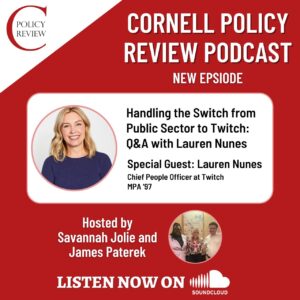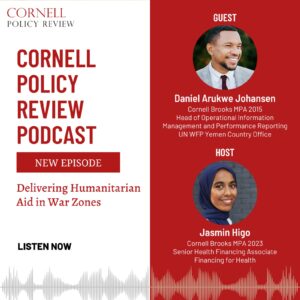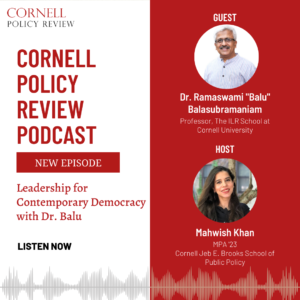
Image by Sarah Lu
By Destiny J.B. Hernandez
Edited by Samyukta Singh
Introduction
“Racism is the relegation of people of color to inferior status and treatment based on unfounded beliefs about innate inferiority, as well as unjust treatment and oppression of people of color, whether intended or not. Racism is not always conscious, intentional, or explicit—often it is systemic and structural”.1
Racism is expressed in many forms: overtly, covertly, directly, indirectly, systemically, and structurally. Systemic and structural racism involves widespread and deep-seated systems, laws, practices, and policies–both documented and undocumented–that promote and perpetuate discrimination on the basis of race. Decades of such systemic oppression has led to notable, globally felt disadvantages among Black, Indigenous, and People of Color (BIPOC) groups.1 The U.S. alone has a long and notorious history of racism, mistreatment, and discrimination against African Americans, Latinos, Native Americans, and other POC groups.2 Governments at every level–federal, state, and local–play a role in this. Together, officials oversee a myriad of regulatory processes in the U.S., all of which impact the allocation of resources. Racism, whether overt or covert, within these systems thus has cascading and harmful impacts among BIPOC groups.
This type of racism is referred to as institutionalized racism, and is most often experienced within housing and wealth building, public health, education, and criminal justice systems. These systems exist under the U.S.’ bureaucratic umbrella, subjecting them to rules that allow feedback from the public and diverse stakeholders to drive the development and facilitation of strategic change. Part of creating this change, however, is educating the public on the importance of public health issues. This includes racism: what racism is, why racism is considered a public health crisis, and what can be done to address it.
Background
The biopsychosocial and spiritual health threats of racism long precede Congress’ declaring it a public health crisis in 2021. Historical patterns that guide administrative practices often involve racial bias. These practices are influenced by racist attitudes, which can lead to conscious or unconscious complicity in the face of oppressive attitudes and practices.3 The U.S. law enforcement system is a great example of this, given its long history of racial profiling, police brutality, and neglectful or differential treatment of Black and low-income communities when compared with White, high-income communities.
This pattern is not new. American slavery, an indelible reproach on American government and culture, involved the legal and institutional enslavement of African Americans from 1619 through 1865.2 This racism against African Americans continued with the segregation practices and laws of the Jim Crow era. Jim Crow had serious public health impacts: take, for example, the public lynchings–public execution of people without legal due process–of African Americans in the southern states.4 These so-called “terror lynchings” were a method used by White Supremacists to terrorize and control Black people in the 19th and 20th centuries.4 Public lynchings peaked between 1880 and 1940 and claimed the lives of African American men, women, and children who were forced to endure the fear, humiliation, and barbarity of this widespread phenomenon.
During public lynchings Black people were typically hung from trees by their necks with ropes.5 Some public lynchings even included torture, mutilation, decapitation, desecration, and burning Black people alive.5 These executions were typically carried out by White supremacists, members of the Ku Klux Klan, and sometimes even White police officers under the guise of justice. 4,743 lynchings occurred between 1882 to 1968 in the U.S., taking innocent Black lives, disrupting families, and exposing onlookers to weeks of gruesome scenes and many residual traumas that would last for decades to come.5 The existence of Jim Crow laws and lack of BIPOC protections enabled these heinous acts. Today, the lingering and invasive ramifications of such systemic racism are still felt, as they are laced into the fabric of societal structures and policies that perpetuate injustice and discrimination.
Policy Discussion
On April 22, 2021, Representative Jahana Hayes (D-CT) submitted resolution H.Res.344 entitled, “Declaring Racism a Public Health Crisis”.2 The resolution includes an evidence-based reflection on the history of racism in the U.S., the ways in which racism impacts the health of BIPOC groups, and how a culmination of racist events has led to a public health crisis. The resolution requests that the U.S. honor the following list of commitments:
“(A) establishing a nationwide strategy to address health disparities and inequity across all sectors in the United States;
(B) dismantling systemic practices and policies that perpetuate racism in the United States;
(C) advancing reforms to address years of neglectful and apathetic policies that have led to poor health outcomes for communities of color in the United States; and
(D) promoting efforts to address the social determinants of health—especially for Black, Latino, and Native American people, and other people of color in the United States”2
To emphasize the depth of this issue, Representative Hayes’ resolution also defines four criteria that qualify a public health crisis: its effects are widespread and increasing, disproportionately felt, preventable, but lacking preventative action.2 Racism meets each of these criteria.
Criteria #1: “The condition affects many people, is seen as a threat to the public, and is continuing to increase”2
The recent COVID-19 pandemic exposed the public health inequities that disproportionately impact communities of color. The Centers for Disease Control and Prevention (CDC) reports that members of Black, American Indian/Alaska Native, and Latino/Hispanic communities are more likely to contract the COVID-19 virus than White Americans. The report also found that these communities are more likely to be hospitalized and die should they contract the virus.6 Together, these at-risk groups make up 60.5% of total COVID-19 deaths, despite accounting for only 32.8% of the age-standardized population.6 Additionally, there is no cogent evidence to prove that genetic or biological differences between racial groups drive racial disparities in health outcomes. Therefore, it can be ascertained that these disparities are a result of differential treatment, inequitable standards of care, and different levels of access to sufficient health care based upon race.
Criteria #2: “The condition is distributed unfairly”2
Many public health patterns show how racism has survived the course of time and has found its way through history into modern practices. Today, racism is expressed less blatantly than it has been historically. The CDC reported in 2022 that Black women are three to four times more likely to experience pregnancy-related deaths than White women.7 A significant proportion of Black women experience preventable deaths during childbirth, lose babies within the first 41 days after giving birth, and receive subpar care from health care providers. This issue is likely linked to a lack of healthcare access and implicit biases held by health care providers. Medicaid, a federally funded health care service, only covers maternal health issues that occur 60 days postpartum. This insurance is used primarily by low-income communities, made up of mostly women of color–especially Black women. The 60-day coverage stipulation does not consider the differential needs of racial groups, and such restrictions are less likely to exist among private insurance plans used by higher-income White women. The influences of racism on these public health issues make it a human rights issue, and further justify the declaration of racism as a public health crisis.
Criteria #3: “Preventive measures could reduce the effects of the condition”2
Representative Hayes lays out how racism has directly impacted public health issues, including the unique ways in which Black people in the U.S. experience hyper-awareness while engaging in everyday activities. This includes jogging around neighborhoods, driving while Black, and, as seen in the case of Breonna Taylor, even existing in the safety of their homes.2 Representative Hayes also notes that these experiences do not exist among White populations. The importance of declaring racism a public health crisis is also connected to the fact that in the U.S., Black people are three times more likely to be killed by police than White people; police violence is listed as the sixth leading cause of death for young Black men.2 These dynamics negatively impact the mental health of Black community members. Human health includes economic stability, safe living environments, access to education, food, work, place, worship, and overall quality of life. Anything that poses a threat to human health, such as racism, must be confronted. Declaring racism a public health crisis will help dismantle systemic law enforcement practices and policies that perpetuate racism in the U.S., thereby preventing or reducing deaths and mental health problems, and promoting better social health for BIPOC communities.
Criteria #4: “Those preventive measures are not yet in place”2
Native Americans have also suffered greatly at the hands of the U.S. government. The U.S. agreed on over 350 treaties related to health care services and social programming with sovereign indigenous communities,2 and has failed to honor its agreements. As a result, chronic and pervasive underfunding of health services to Native Americans continues. Additionally, health and socioeconomic disparities among indigenous communities continue to rise, and federal public health and social programs in Native American communities remain inaccessible.2 The failure of the U.S. government to honor its agreements with Native Americans neglects the preventive measures needed to support efficient health care and prevent health decline among Native Americans.
Policy Implications
Declaring racism a public health crisis helps reshape public opinion in the following ways:
- Increases public awareness and education on the pervasive and deadly effects of racism.
- Creates urgency in acknowledging institutional racism as the root cause of many public health issues affecting BIPOC communities.
- Allocates significant resources, time, and effort toward establishing and implementing solutions that empower BIPOC communities.
Another benefit of declaring racism a public health issue is the effect it will have on American culture, as laws have an influence over culture. Laws that place equal value on the lives of BIPOC individuals and White, wealthy, and powerful individuals alike send a strong message that equal treatment must follow. This effort would help to dismantle systemic racism, promote empathy for BIPOC individuals, and make room for policies centered on both equity and equality. Closing access gaps in public health–as well as wealth, income, education, and other social determinants of health–will help to effectively address equity.
Declaring racism a public health crisis has the power to champion effective new anti-racism policy and reduce division between policymakers, community organizers, and health care practitioners. It creates a common ground to connect groups trying to address public health issues.8 There are concerns regarding how declaring racism a public health issue may negatively impact grassroots organizations already working to improve public health issues faced by communities of color. Some worry these organizations may become obsolete leaving leaders displaced and their hard work discarded, while federally funded organizations led by White people take their place. These concerns are not unfounded, but champions of the resolution believe there is an effective way to avoid these negative impacts.
To maximize the benefits of declaring racism a public health crisis, public institutions must be held accountable by allowing BIPOC to have direct involvement and to take charge of policy development, organization, and dismantling of system racism. Federal government representatives should partner with existing grassroot organizations already engaged in anti-racist work by sharing resources with them. Bringing their voices to the center-stage will ensure that strategic change is accomplished, using the insight of those most impacted and allowing solutions that are more connected to the demands of communities at risk. Declaring racism a public health crisis empowers the anti-racist work already being done and adds additional support, resources, and protections to its stakeholders. Since the U.S. government operates on a democratic system that accepts public feedback, those most impacted will have the chance of having their voices heard and their demands validated through the backing of this resolution by Congress.
Conclusion
The U.S.government is not perfect, and all classical and bureaucratic theories face their share of criticism. While public opinion varies on whether racism should be declared a public health issue, it is clear that racism does impact BIPOC communities through access to social determinants of health. Racism has proven to leave indelible scars on the entire nation and onlookers from other parts of the world. The evidence is indicated in Representative Hayes’ resolution, and a demand has been placed on the U.S. to unite for a moral purpose to eradicate racism with a cross-governmental approach, regardless of shared public opinion.
References
- Braveman, Paula A., Elaine Arkin, Dwayne Proctor, Tina Kauh, and Nicole Holm. 2022. “Systemic and Structural Racism: Definitions, Examples, Health Damages, and Approaches to Dismantling.” Health Affairs 41 (2): 171–78. https://doi.org/10.1377/hlthaff.2021.01394.
- Hayes, Johana. “H.Res.344 – Declaring Racism a Public Health Crisis.” congress.gov. Johana Hayes, April 22, 2021. https://www.congress.gov/bill/117th-congress/house resolution/344?r=26&s=1.
- Alexander, Jennifer, and Camilla Stivers. “Racial bias: A buried cornerstone of the administrative state.” Administration & Society 52, no. 10 (2020): 1470-1490. 2-og. Braveman, Paula A., Elaine Arkin, Dwayne Proctor, Tina Kauh, and Nicole Holm. 2022. “Systemic and Structural Racism: Definitions, Examples, Health Damages, and Approaches to Dismantling.” Health Affairs 41 (2): 171–78. https://doi.org/10.1377/hlthaff.2021.01394.
- “Lynching in LYNCHING in AMERICA Confronting the Legacy of Racial Terror Third Edition Equal Justice Initiative.” n.d. https://eji.org/wp content/uploads/2019/10/lynching-in-america-3d-ed-080219.pdf.
- NAACP. 2021. “History of Lynching in America | NAACP.” Naacp.org. 2021. https://naacp.org/find-resources/history-explained/history-lynching-america.
- Centers for Disease Control and Prevention. “Risk for COVID-19 infection, hospitalization, and death by race/ethnicity.” (2021).
- Centers for Disease Control and Prevention. “Working together to reduce Black maternal mortality.” Health Equity 9 (2021).
- Paine, Lilliann, Patanjali de la Rocha, Antonia P. Eyssallenne, Courtni Alexis Andrews, Leanne Loo, Camara Phyllis Jones, Anne Marie Collins, and Michelle Morse. “Declaring racism, a public health crisis in the United States: cure, poison, or both?.” Frontiers in public health 9 (2021): 606.





